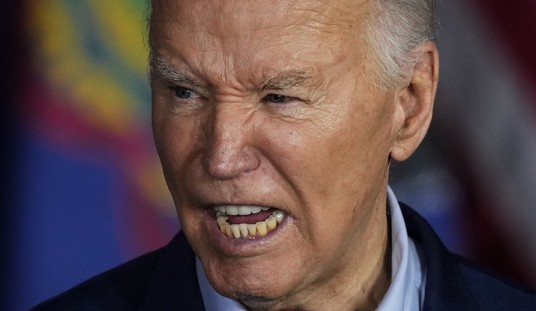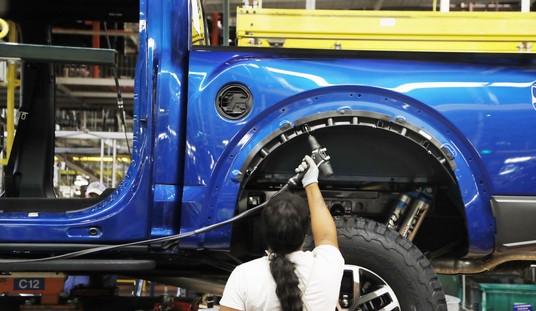At least this time the methodology was consistent. The US economy beat expectations in January, adding 678,000 jobs as the country moved away from its Omicron-wave imposed restrictions on commerce. Not everything was peachy, however, especially not on wages in a high-inflation environment:
Total nonfarm payroll employment rose by 678,000 in February, and the unemployment rate edged down to 3.8 percent, the U.S. Bureau of Labor Statistics reported today. Job growth was widespread, led by gains in leisure and hospitality, professional and business services, health care, and construction. …
In February, the unemployment rate edged down to 3.8 percent, and the number of unemployed persons edged down to 6.3 million. In February 2020, prior to the coronavirus (COVID-19) pandemic, the unemployment rate was 3.5 percent, and the number of unemployed persons was 5.7 million. (See table A-1.)
Among the major worker groups, the unemployment rates for adult men (3.5 percent) and Hispanics (4.4 percent) declined in February. The jobless rates for adult women (3.6 percent), teenagers (10.3 percent), Whites (3.3 percent), Blacks (6.6 percent), and Asians (3.1 percent) showed little or no change over the month. (See tables A-1, A-2, and A-3.)
Among the unemployed, the number of persons on temporary layoff, at 888,000 in February, was little changed over the month. The number of permanent job losers, at 1.6 million in February, also changed little. Both measures are higher than their February 2020 levels of 780,000 and 1.3 million, respectively. (See table A-11.)
One particularly worrying sign came in the participation rates, which have remained flat even with the large number of jobs being added. Another came in a rise in the part-time-by-economics figures, which normally would signal a slowdown of jobs and hours worked:
The labor force participation rate, at 62.3 percent in February, changed little over the month. The employment-population ratio edged up to 59.9 percent. Both measures remain below their February 2020 levels (63.4 percent and 61.2 percent, respectively). (See table A-1.)
The number of persons employed part time for economic reasons increased by 418,000 to 4.1 million in February but remains below its February 2020 level of 4.4 million. These individuals, who would have preferred full-time employment, were working part time because their hours had been reduced or they were unable to find full-time jobs.
That’s a big jump to part-time work, and one has to wonder why it happened. We have supposedly been in a labor shortage for months, which should favor full-time work and hours. Why did 418,000 people have to shift to part-time work?
And even more interestingly, why did wages remain flat in a labor shortage?
In a sign that inflation could be cooling, wages barely rose for the month, up just 1 cent an hour or 0.03%, compared to estimates for a 0.5% gain. The year-over-year increase was 5.13%, well below the 5.8% Dow Jones estimate.
Wage stagnation may help temper inflation, but it’s not a direct sign that inflation is abating. That would come from more direct measures such as the consumer price and producer price indices, both of which have accelerated for months. In fact, CNBC later notes, economists expect the CPI to rise even further in the next iteration:
The economy also has been wrestling with pernicious inflation pressures running at their highest levels since the early 1980s stagflation days. The Labor Department’s main inflation gauge showed consumer prices rising at a 7.5% clip in January, a number that is expected to climb to close to 8% when February’s report is released next week.
The Associated Press highlighted the wage issue too, and didn’t go quite as far as CNBC in suggesting that inflation may have begun retreating:
Average hourly pay barely rose last month but has increased 5.1% in the past year, a sign that companies feel compelled to raise wages to attract and keep workers. Many employers, in turn, have been raising prices to offset their higher labor costs, a process that has fueled inflation.
Consumer inflation has reached its highest level since 1982, squeezing America’s households and businesses, with price spikes especially high for such necessities as food, gasoline and rent. In response, the Federal Reserve is set to raise interest rates several times this year beginning later this month. Those increases will eventually mean higher borrowing rates for consumers and businesses, including for homes, autos and credit cards.
What this looks like is that businesses are reluctant to pass along wage inflation in full, and are tempering it by moving to part-time employment where possible. That lowers non-wage employee costs (benefits) and allows for more flexibility on price hikes as consumers’ buying power erodes. In that kind of environment, pressure on wages lessens considerably, and that could have a tempering impact on inflation — but it will come at the expense of workers.
Still, the numbers look pretty good overall. The only industry to lose jobs was automotive, likely due to furloughing in the chip shortage. Demand remains high for new vehicles, so those jobs should return when the supply chain crisis finally resolves, although that might take quite a while for chipmakers to get new production on line to fill the gaps.
Worth noting, too: Even with the large monthly figures of the past couple of months, we are still 2.1 million jobs short of the number of jobs two years ago at the start of the pandemic. And that doesn’t account for the jobs that we should have gained due to population growth, which at 60% participation rates would amount to another 2.4 million jobs (two million people a year added to the population = 4 million * 0.6 = 2.4 million). At this rate, it will take a few more years to fully catch up. We need to add more jobs per month to fill that gap more quickly and finally recover from COVID-19.







Join the conversation as a VIP Member